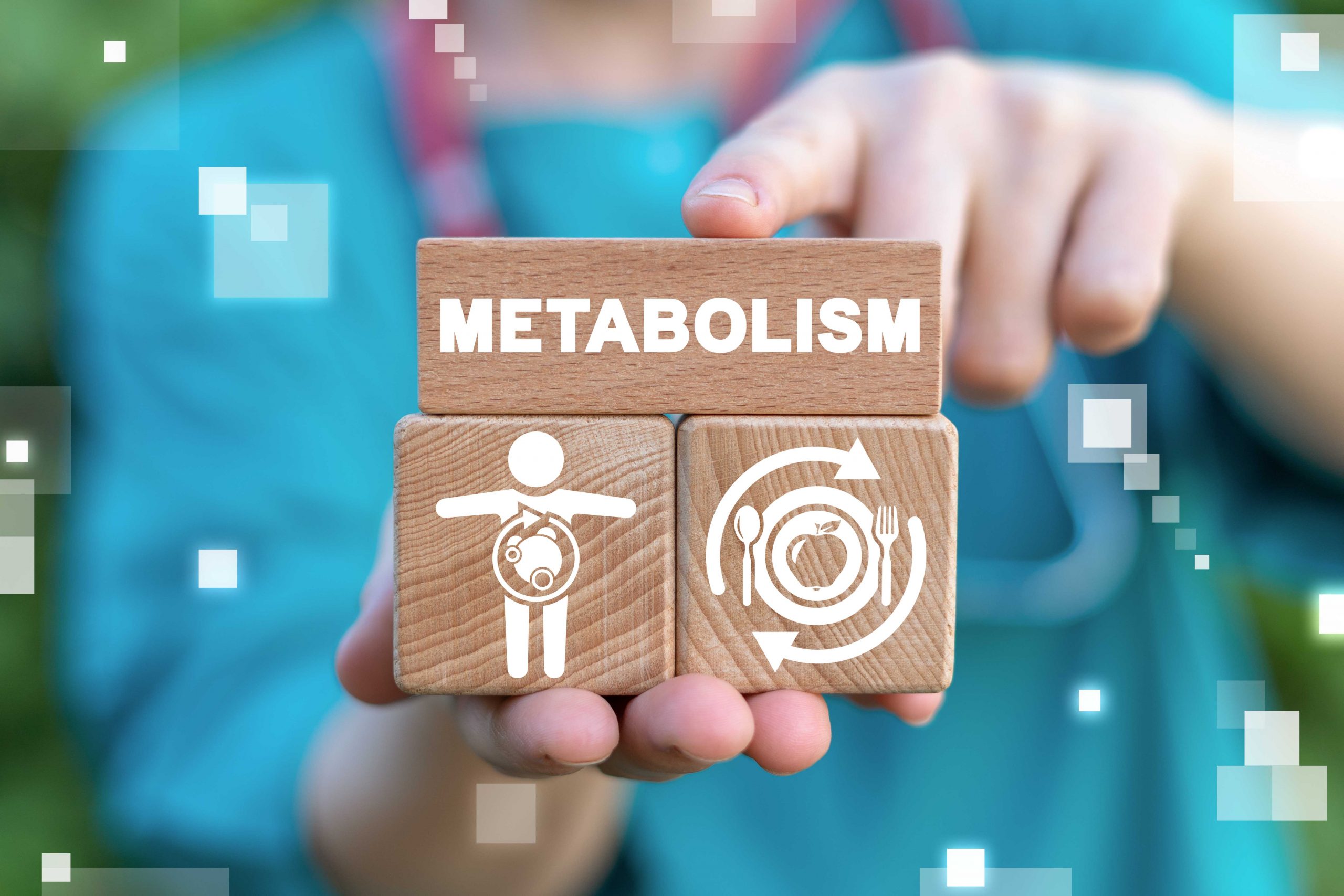Basic Metabolic Measurement Service

Basic Metabolic Calculation Easy and Reliable
Metabolism remains the central axis of the human diet and concerns the process by which the body converts food intake into energy and uses it to perform its functions, involuntarily and voluntarily. That is, it concerns all the chemical reactions that occur continuously in the body and allow its life and normal function, such as its reproduction, development, maintenance or reaction to environmental stimuli.

It is complex and is divided into two parts: a) catabolism, which refers to the breakdown / decomposition of the components of the food intake into simpler forms and their conversion into energy and b) anabolism, which uses this energy to synthesize chemicals that are necessary for the reconstruction / synthesis of cells or their preservation.
Higher calorie intake than the body really needs to cope with daily anabolism leads to the storage of excess nutrients as fat.
Key Factors of Basal Metabolic Rate Variation
Its rhythm varies from person to person, as it depends on various factors and specifically on:
Age – The metabolism increases when a child grows up and peaks when he reaches 16 or 17. Then it slows down, due to the loss of muscle tissue, but also the hormonal and neurological changes that occur with aging. Thus, after the age of 30, there is an increase in stored fat in both men and women. This is because muscle tissue burns more calories than stored fat.
Gender – Men have more muscle mass than women, due to male hormones and therefore their metabolism is faster. However, women’s metabolism increases during pregnancy and breastfeeding.
Heredity – Genetics play an important role in the energy expended by the body. That is, the metabolic rate is determined in part by the genes of the ancestors, which are also responsible for the production of certain enzymes that help in the intake and use of fat.
Temperature – Both indoor and outdoor temperatures are factors that affect metabolism. That is, when the body tries to maintain its normal temperature (to drop the fever, to keep its organs warm when cold conditions prevail, etc.) it expends energy, accelerating it. This energy is greater when the surface of the body is larger, that is, when the person is taller.


Hormones – Levels of certain hormones have a direct effect on metabolism. Hyperthyroidism, for example, causes it to increase, while hypothyroidism causes it to slow down. Also, excess adrenaline, caused by adrenal tumors (pheochromocytomas), speeds up metabolism, as well as the excessive presence of growth hormone (megalacria). However, apart from pathological conditions, there are also hormones that are affected by external stimuli, such as stress. Cortisol, which is released by the adrenal glands under stress, releases extra energy into the body through the metabolism of fats and carbohydrates. However, it also “activates” the appetite and the desire to eat sweet, fatty and salty foods.
Diseases and Medications: Metabolism is also affected by various diseases and medication. Cancer, congestive heart failure, polycythemia and Paget’s bone disease increase metabolism, as do adrenergic agonists (class of drugs). In contrast, obesity, hypogonadism (low testosterone production), adrenal insufficiency, Cushing’s syndrome and sedatives reduce it.
Sleep – Metabolism continues to function during sleep. It just slows down by 15%, reaching its lowest level in the morning. Sleep deprivation usually leads to metabolic dysfunction and of course offers more time for eating.
Nutrition – The body expends energy on the digestion and absorption of nutrients. This metabolic process covers about 5-10% of the daily total calorie expenditure. It is greater when protein is consumed. Certain nutritional deficiencies (such as iodine, which reduces thyroid function) also slow down metabolism.
Exercise – A sedentary lifestyle slows down the metabolism, because it helps reduce the loss of muscle tissue. However, sufficient lean mass increases combustion. There are specially designed training programs that improve muscle condition and facilitate weight loss.
A change in the way this system works is likely to cause problems, including metabolic syndrome and weight gain.


Basic Metabolic Rhythm and Body Weight
The basal metabolic rate (BMP) is the amount of energy that the body burns at rest and fasting (for 10-12 hours) in a temperature-neutral environment. It is the number of energy (calories) needed to maintain life, for the brain and central nervous system to function properly, the heart, kidneys, liver, lungs, muscles, reproductive organs and skin.
BMR is 70% of the calories expended in a 24 hour period. The rest are used for body movement in general. It is often confused with the Resting Metabolic Rate (RMR), which represents the calories a body burns while awake but at rest.
As the percentage of obese people increases, the need to measure daily energy needs to develop a weight loss or management plan is imperative.
How RMR is Measured
Because the conditions for calculating the Basic Metabolic Rate are many and difficult to achieve, what is usually calculated is the Resting Metabolic Rate, which is approximately 10 – 20% higher than the Basic Metabolic Rate.
The test is based on measuring oxygen consumption and carbon dioxide production. Oxygenation of food (O2) is used during the oxidation of food and carbon dioxide (CO2) is produced, in proportion to the heat production. Theoretically, for every liter of oxygen used by the body, about 5 calories are produced (energy equivalent of oxygen).
The measurement of gas exchange by indirect calorimetry also allows the calculation of the respiratory quotient (AP = exhaled CO2 / inhaled O2), which reflects the percentage composition of the mixture of energy substrates. These substrates oxidize and provide energy, as the various macronutrients require different amounts of oxygen in order to be metabolized to carbon dioxide.
At Myflex we use Fitmate, a metabolism system designed by Cosmed, a pioneer in the manufacture of cardiorespiratory and metabolic diagnostic equipment for weight control. It is extremely reliable and therefore used by professionals whose career depends on their good physical condition and performance. Indicatively, this system is used to control the metabolism of Bayern players.


The process of finding the Metabolic Rhythm of Rest is quick and simple. It includes a short, non-invasive test, during which the examinee rests in an armchair and breathes through a silicone mask for 15 minutes. Four hours after the measurement, it is not allowed to consume food or liquids other than water, caffeine, dietary supplements, taking certain medications (ephedrine, Ma Huang or pseudoephedrine). It is also not allowed to exercise up to 8 hours before the test. For the final result, factors that affect the metabolism (eg pregnancy, diseases, drugs) are taken into account by the nutritionist who performs the measurement.
After learning the Metabolic Rhythm of Rest, we design the appropriate scheme of balanced – flexible diet and exercise, in order to achieve the goal we pursue each time.
A properly functioning metabolism facilitates the loss and maintenance of the ideal weight. Dimitris Economakis and the nutrition and fitness experts of Myflex have mastered the knowledge of its activation mechanism and have helped thousands of people to get the body they have always dreamed of.
It is easy for people who know their basal metabolic rate to calculate their everyday energy needs in order to achieve their physical goals; whether to lose or maintain their weight.
You don’t have to monitor your basal metabolic rate often. This measurement should be carried out once a year in order to ensure that you are on the right path with your meal plan.
The basal metabolic rate shows the calories that a body needs in order to survive. The combination of proper nutrition and movement creates a calorie deficit that gradually leads to weight loss.
Measurements conducted by professionals produce the most accurate results. The prevailing BMR equation provides a good approximation, but we shouldn’t take it for granted.
Metabolism = all the biochemical responses (e.g. food breakdown and fat storage) which ensure that there is enough energy for humans to do everything, from performing bodily functions to keeping their mind working and their body moving.
Basal Metabolic Rate = the minimum number of calories that a body needs in order to keep performing vital functions, such as breathing, while it is in a resting mode.